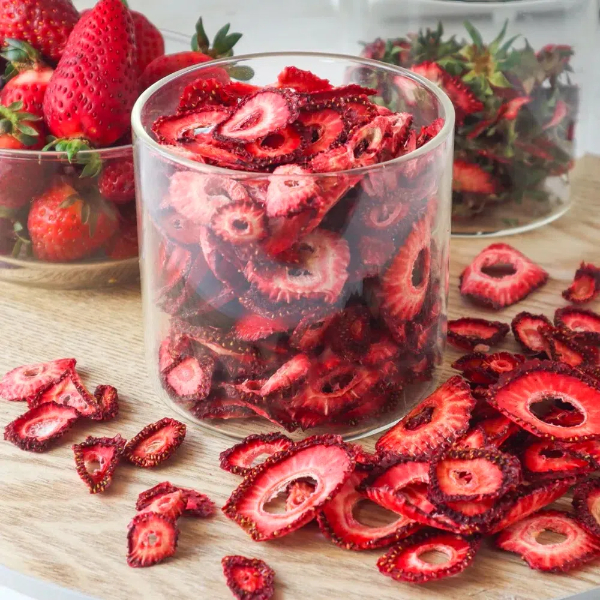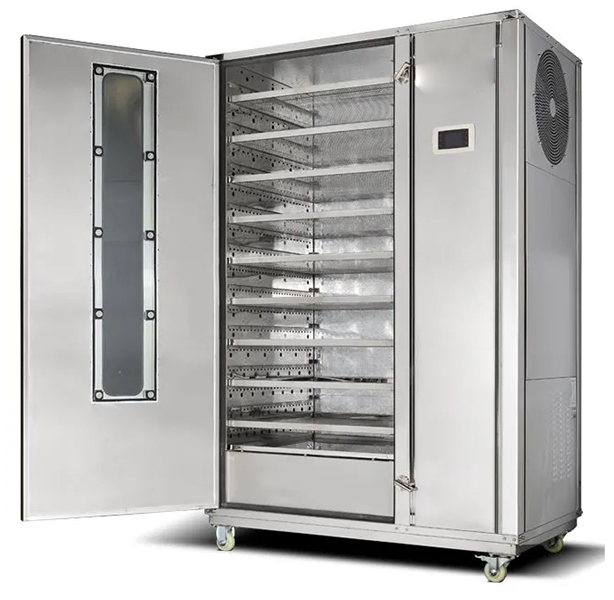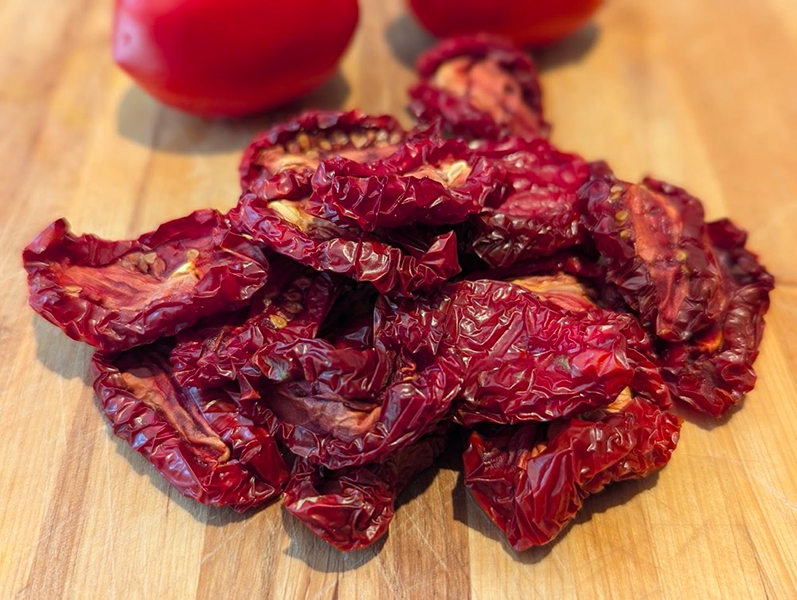The integration of a hang type dryer into an existing production line can significantly enhance the efficiency and quality of food processing operations. This article will explore the essential steps, benefits, and considerations for successfully incorporating this technology into your facility.

Understanding Hang Type Dryers
Hang type dryers are specialized equipment designed for drying food products by suspending them from hangers within a controlled environment. This method is particularly effective for items such as noodles, sausages, fish, and herbs, where even drying is crucial to prevent spoilage and maintain texture.
Key Features:
1. Even Airflow: The design allows air to circulate freely around the food items, ensuring uniform drying.
2. Controlled Environment: Temperature, humidity, and airflow can be precisely managed to optimize the drying process.
3. Reduced Contact Points: Minimizing contact with surfaces reduces the risk of sticking or deformation.
Benefits of Hang Type Dryers
Integrating hang type dryers offers numerous advantages:
1. Prevention of Spoilage: By reducing moisture content, drying prevents the growth of yeast, bacteria, and fungi.
2. Extended Shelf Life: Properly dried foods can be stored for longer periods without refrigeration.
3. Preservation of Nutritional Value: Controlled drying processes help retain essential nutrients.
4. Energy Efficiency: Many modern hang type dryers utilize heat pump technology, saving up to 75% energy compared to traditional methods.
5. Improved Product Quality: The gentle drying process minimizes damage to the food structure, preserving flavor, color, and texture.
Steps to Integrate a Hang Type Dryer
1. Assess Your Current Production Line:
- Evaluate your existing setup to determine how a hang type dryer can fit into your workflow. Consider factors such as space availability, product types, and production capacity.
2. Select the Right Dryer Model:
- Choose a hang type dryer that meets your specific needs based on the types of food products you process. Factors to consider include drying capacity, temperature control features, automation options, and ease of maintenance.
3. Design Integration Layout:
- Plan the layout for integrating the dryer into your production line. Ensure that there is adequate space for loading and unloading products and that it aligns with other equipment in your line. Consider workflow efficiency to minimize downtime during transitions between processes.
4. Install Necessary Infrastructure:
- Make any necessary modifications to your facility's infrastructure to accommodate the new dryer. This may include electrical connections, ventilation systems, or structural supports. Ensure compliance with local regulations regarding food processing equipment installation.
5. Train Your Staff:
- Provide comprehensive training for your staff on how to operate the new equipment efficiently. Focus on best practices for loading/unloading products and monitoring drying parameters. Regular refreshers can help maintain high operational standards and safety protocols.
6. Monitor Performance Metrics:
- After integration, closely monitor key performance indicators such as energy consumption, drying time, product quality, and employee efficiency to identify areas for improvement. Utilize data analytics tools if available to track performance over time.

Best Practices for Operating Hang Type Dryers
To maximize the benefits of hang type dryers, consider these best practices:
1. Conduct thorough research on specific drying needs based on product types before selecting a dryer model.
2. Implement regular maintenance checks to keep equipment running smoothly and extend its lifespan. Maintenance should include cleaning filters, checking seals for leaks, and ensuring that all mechanical parts are functioning correctly.
3. Adjust drying parameters based on seasonal changes in humidity and temperature for optimal results year-round. Utilize data from previous batches to fine-tune settings for different products.
4. Use high-quality hangers that are compatible with the dryer design to prevent damage during loading/unloading processes.
Common Challenges During Integration
While integrating a hang type dryer can be beneficial, several challenges may arise:
1. Space Constraints: Depending on your facility layout, finding adequate space for a new dryer can be difficult. A detailed analysis of your current setup can help identify potential solutions such as reconfiguring existing equipment placements or utilizing vertical space more effectively.
2. Initial Costs: The upfront investment in a high-quality hang type dryer may be significant. However, consider long-term savings in energy costs and improved product quality as justifications for this investment.
3. Training Needs: Employees may require additional training to adapt to new equipment and processes. Investing in thorough training programs will pay off in reduced errors and increased productivity.
Case Studies: Successful Integration Examples
Case Study 1: Noodle Production Facility
A noodle production facility integrated a hang type dryer into its existing line after experiencing issues with moisture retention in their products. After careful assessment and selection of an appropriate model that could handle their specific production volume, they redesigned their workflow to include the dryer seamlessly. Following integration:
- They reported a 30% reduction in spoilage rates.
- Customer satisfaction increased due to improved noodle texture.
Case Study 2: Meat Processing Plant
A meat processing plant faced challenges with uneven drying in their traditional methods. By switching to a hang type dryer:
- They achieved uniform moisture content across all products.
- Energy costs decreased by 40% due to more efficient drying cycles.
These case studies illustrate how thoughtful integration can lead to significant operational improvements.
Conclusion
Integrating a hang type dryer into your existing production line can lead to significant improvements in efficiency, product quality, and sustainability. By carefully assessing your needs and following best practices during integration—along with learning from successful case studies—you can enhance your food processing capabilities while meeting growing market demands.

FAQs
1. What types of products are suitable for hang type dryers?
Hang type dryers are versatile and suitable for various foods including noodles, meats, fish, herbs, spices, fruits, and vegetables.
2. How do hang type dryers improve energy efficiency?
Modern hang type dryers often use heat pump technology that recycles heat within the system, leading to energy savings of up to 75% compared to traditional methods.
3. Can I automate my hang type dryer?
Yes, many modern hang type dryers include automation features such as automatic loading/unloading systems that enhance operational efficiency.
4. What maintenance is required for hang type dryers?
Regular maintenance checks should be implemented to keep equipment running smoothly and extend its lifespan. This includes cleaning filters regularly and checking mechanical components for wear.
5. How does airflow management affect drying quality?
Better airflow management leads to more uniform drying and less risk of product sticking or deformation compared to traditional tray dryers.
Citations:
[1] https://www.dryeratech.com/why-every-manufacturer-should-consider-a-hang-type-dryer.html
[2] https://www.corinmac-mix.com/drying-production-line-product/
[3] https://patents.google.com/patent/CN110207480A/zh
[4] https://www.rota.de/en/applications/complete-lines
[5] https://www.iqsdirectory.com/articles/dryer/types-of-dryers.html
[6] https://patents.google.com/patent/WO2022068971A1/zh
[7] https://www.dryeratech.com/how-hang-type-dryers-improve-workflow-efficiency-in-factories.html
[8] https://www.dryeratech.com/hang-type-drying-machines-ideal-solutions-for-delicate-materials.html











